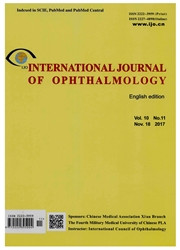

 中文摘要:
中文摘要:
AIMTo 决定在网膜的 vasculature 变化和 stroke.METHODSMEDLINE 和 EMBASE 之间的协会被在找相关人的研究到调查了在击的网膜的 vasculature 变化和流行或发生之间的协会的 2015 年 9 月;研究独立地为他们的质量被检验。在可能的地方,临床的特征和计算概括机会比率(ORs ) 上的数据为在网膜的 microvascular 畸形和击之间的协会被提取,包括击子类型,并且调整了因为关键 variables.RESULTSNine 案例在包括 20 的学习被包括 659 个病人,其中 1178 个是击病人。词法标记使用了的网膜的 microvascular 是出血, microaneurysm,容器口径,动静脉的 nicking,和分数维的尺寸。或分别地,网膜的小动脉变窄和网膜的动静脉的 nicking 和击, 1.42 和 1.91 正在显示一根小口径的网膜的小动脉和网膜的动静脉的 nicking 与击被联系。或分别地,网膜的出血和网膜的 microaneurysm 和击, 3.21 和 3.83 正在显示网膜的 microvascular 损害高度与击被联系。结果也证明那网膜的分数维的尺寸减小与击被联系(或:2.28 为小动脉网络,或:1.80 为 venular 联网).CONCLUSIONRetinal vasculature 变化有一种特定的关系摸,它是为用计算机化的网膜的容器分析的击的预言的有希望的证据。
 英文摘要:
英文摘要:
AIM: To determine the association between retinal vasculature changes and stroke.METHODS: MEDLINE and EMBASE were searched for relevant human studies to September 2015 that investigated the association between retinal vasculature changes and the prevalence or incidence of stroke; the studies were independently examined for their qualities. Data on clinical characteristics and calculated summary odds ratios (ORs) were extracted for associations between retinal microvascular abnormalities and stroke, including stroke subtypes where possible, and adjusted for key variables. RESULTS: Nine cases were included in the study comprising 20 659 patients, 1178 of whom were stroke patients. The retinal microvascular morphological markers used were hemorrhage, microaneurysm, vessel caliber, arteriovenous nicking, and fractal dimension. OR of retinal arteriole narrowing and retinal arteriovenous nicking and stroke was 1.42 and 1.91, respectively, indicating that a small-caliber retinal arteriole and retinal arteriovenous nicking were associated with stroke. OR of retinal hemorrhage and retinal microaneurysm and stroke was 3.21 and 3.83, respectively, indicating that retinal microvascular lesions were highly associated with stroke. Results also showed that retinal fractal dimension reduction was associated with stroke (OR: 2.28 for arteriole network, OR: 1.80 for venular network).CONCLUSION: Retinal vasculature changes have a specific relationship to stroke, which is promising evidence for the prediction of stroke using computerized retinal vessel analysis.
 同期刊论文项目
同期刊论文项目
 同项目期刊论文
同项目期刊论文
 期刊信息
期刊信息
